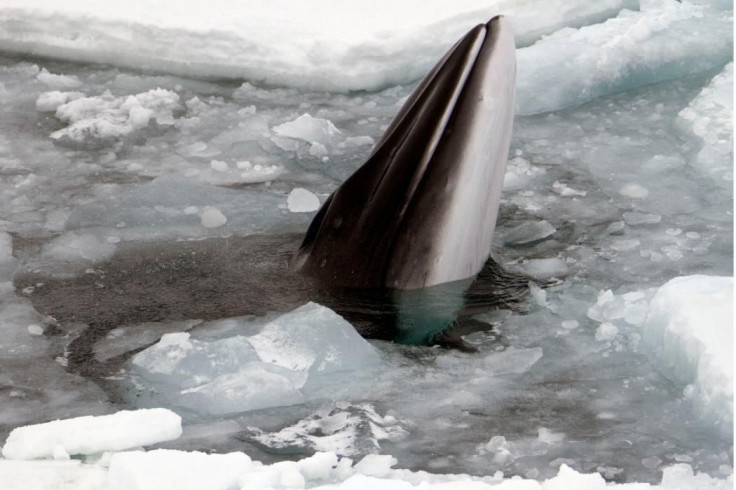Watch: Minke Whale Swimming Under The Ice In Antarctica
During a scientific expedition to Antarctica, scientists were fortunate enough to capture an incredible video of a minke whale swimming under the ice. The researchers from the University of Canterbury, who were there to study killer whales, couldn’t believe their luck when the prototype camera, designed by Antarctic film expert Anthony Powell of Antzworks, being used by the team to record footage, managed to capture a stunning underwater video of the whale’s movements.
“I’m such an excited scientist right now!” Regina Eisert, a marine mammal expert at the University of Canterbury, said in a statement. “The whole whale glides past – this is such a lucky shot!”
Antarctic minke whales can grow to measure up to 10 meters long and weigh up to 9 tons. However, not much is known about these whales. According to Eisert, this may be the first time that a minke whale’s video has been recorded underwater, showcasing the majestic mammal swimming in the sea ice, in the Ross Sea.
Scientists were particularly excited about this video because they hadn’t realized that the prototype camera had captured anything at all.
“The plan was to film continuously across the icebreaker channel that is prepared for the re-supply vessel to cross McMurdo Sound. The water’s so clear, you can see right across the 50-80m lane and monitor all the whales that use the channel,” Eisert added. “Unfortunately, the system only recorded for just a few hours, due to teething problems for this new technology in the field. We had no idea that we had this footage until Anthony found it when checking the camera back in Christchurch.”
At present, experts estimate that there are around 180,000 minke whales in the Southern Ocean, which includes the Ross Sea area. While the mammal is believed to be an important part of the Ross Sea food network, according to Eisert, researchers have yet to figure out the minke whales’ role in the ecosystem.

Minke whales are also the only whales that are still hunted in the Southern Ocean for scientific purposes. However, scientists can use other methods, such as dart biopsies and photo-identification to study them, without causing them any harm.
“We can learn so much from a small tissue sample, such as their diet — we think they just eat krill, but do they eat small fish as well? Also, DNA analysis can tell us whether Ross Sea minkes are separate from other minke whales on the Antarctic Peninsula or further north or if they are all part of one larger population,” Eisert said.
According to the marine mammal expert, minke whales are generally low in the food web, since their diet primarily consists of krill. The whales follow the retreating sea ice to hunt for the most abundant feeding grounds.
“This means they’re excellent indicators of ‘ecosystem hotspots’ — particularly productive areas,” Eisert added. “This information in turn feeds into environmental stewardship, in particular by supporting the objectives of the Ross Sea region Marine Protected Area (MPA).”
The researchers hope that the images and other samples gathered can begin to create an important dataset for further research on minke whales in the Ross Sea region.
© Copyright IBTimes 2024. All rights reserved.





















